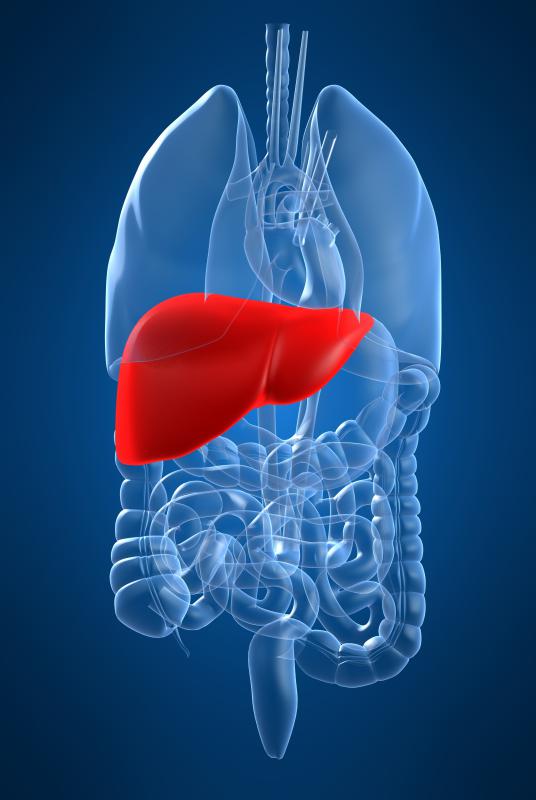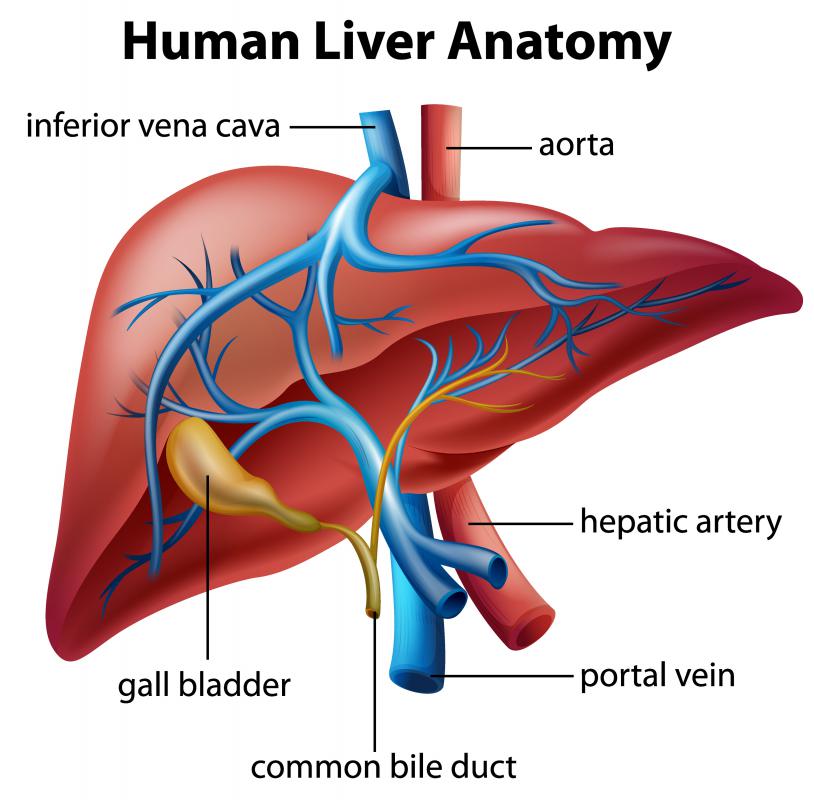At WiseGEEK, we're committed to delivering accurate, trustworthy information. Our expert-authored content is rigorously fact-checked and sourced from credible authorities. Discover how we uphold the highest standards in providing you with reliable knowledge.
What Are the Most Common Symptoms of Liver Adenocarcinoma?
For many patients, liver adenocarcinoma is caught and treatment is started before there are any symptoms of the disease. Developed nations often screen at-risk patients, such as those with cirrhosis of the liver, at regular intervals to catch liver adenocarcinoma in its early stages, when it is most treatable. Rarely, a patient with this type of cancer may present with jaundice, weight loss or swelling, though these symptoms are more frequent in later stages of the disease. As liver adenocarcinoma progresses, patients may also experience pain or a change in the blood flow around the liver.
Though many people who are afflicted with liver adenocarcinoma will not have any signs of the disease, there are a few symptoms that can alert a doctor or patient to the possible presence of cancer. One possible symptom is jaundice, which is a yellowing of the skin, though this can occur as the result of many types of liver malfunctions or abnormalities. Additionally, a loss of muscle mass that is not related to a decrease in activity level or any other type of sickness can be an indicator of liver adenocarcinoma. Swelling in the abdomen around the liver may also be present. In the case of liver adenocarcinoma, this is often the result of a condition called ascites, which is a build-up of fluid in the abdominal cavity.

Tumors in the liver often contain many blood vessels, which can lead to a number of symptoms related to blood flow in the patient’s body. If a tumor blocks a major vessel, such as the portal vein, it can cause increased blood pressure in nearby vessels as blood is diverted through these alternative routes. The increased pressure can cause a vessel to rupture, which may create ascites that are filled with blood rather than clear fluid. The increased pressure and extra blood flowing into the tumors in the liver can make it easy to hear the flow of blood through a stethoscope.

In later stages of liver adenocarcinoma, patients often experience more side effects. Pain around the liver is possible during the late stages of the disease and is usually indicative of a large tumor. Patients may also experience weight loss and are at greater risk of losing muscle mass as the cancer progresses. Fever may be present as the patient attempts to fight off the cancerous cells. If the bile duct is affected by the tumor, it is also likely to see signs of jaundice in the skin or eyes of the patient.
AS FEATURED ON:
AS FEATURED ON:












Discuss this Article
Post your comments